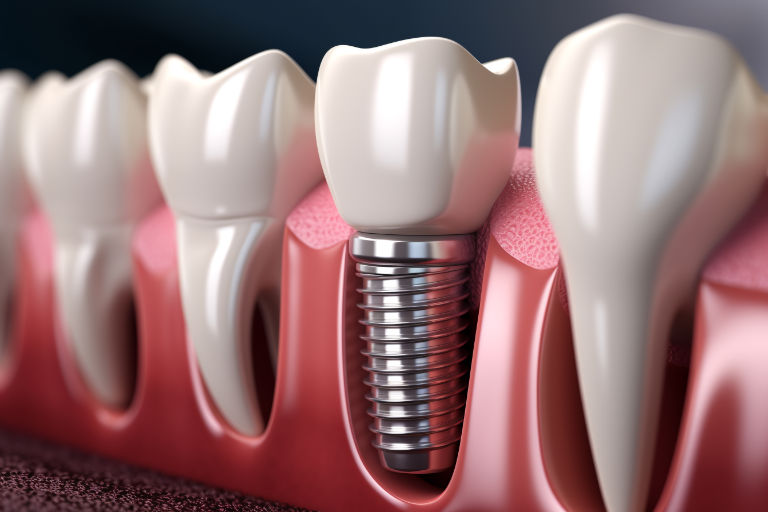Dental Implants

What are dental implants?
If you are missing teeth or have to wear an uncomfortable denture, dental implants could be the ideal solution for you. A dental implant is a titanium screw that is surgically placed into the jawbone and acts as a sturdy anchor for a tooth replacement, also known as a crown. Dental implants can also help anchor removable dentures. Dental implants are a popular and effective way to replace missing teeth as they are designed to blend in with your other teeth and restore the form and function that you were previously accustomed to. Additionally, dental implants can help to preserve facial contours and prevent the bone deterioration that can occur when teeth are missing, thus providing an excellent long-term option for restoring your smile. Titanium is highly compatible with the human body, which makes it a completely safe and secure option.
The advantages of dental implants
Using a dental implant and crown to fill the gap of a missing tooth has many advantages over other types of tooth replacement options. Unlike a dental bridge which requires the support of surrounding teeth after heavy drilling of each tooth, dental implants are a standalone fixture and therefore preserves the integrity of neighbouring teeth, and also provides better bone preservation in the jaw. Dental implants are easier to keep clean which can help to prevent tooth decay and gum disease. Dental implants look and function similarly to a natural tooth allowing you to smile with confidence and regain the ability to eat a normal diet.
The dental implant procedure
There are three main stages involved in the entire process of a dental implant.
Firstly, a small hole is created in the jawbone and the threaded titanium implant is placed into the hole with a very specific technique. If the area of bone where the implants are to be placed are atrophied or resorbed, and the bone is not substantial enough to hold an implant then a bone graft procedure may be necessary to improve the area. Depending on the form and volume of the remaining jaw bone the bone graft procedure could occur at two stages of treatment. For larger bone loss cases, bone graft procedures may need to be performed about five to six months prior to placement of the dental implants. This usually entails taking a block of bone from another part of the jaw and placing it into the future implant site. For smaller bone loss case, the bone graft can occur at the time of placement of the dental implant using synthetic bone mixed with a small volume of the patient’s own bone.
The second stage sees the bone around the implant healing in a process called osseointegration, where the bone grows around the implant and bonds to the surface of the dental implant. This stage of osseointegration will occur in over 95% of implants. This is an important stage and after about 12 weeks the strength of the osseointegration is sufficient for the patient to return to their dentist for the production of the crown which will be secured to the dental implant. During this period, a temporary denture is worn to fill the gap if necessary. On occasion the osseointegration process fails to occur and the implant will need to be removed. Later, another implant could be placed in the same site.
In the third stage, the patient returns to their dentist or specialist prosthodontist for production of the dental crown or custom-made denture. These are produced to blend in with the size, shape and colour of the other teeth.









